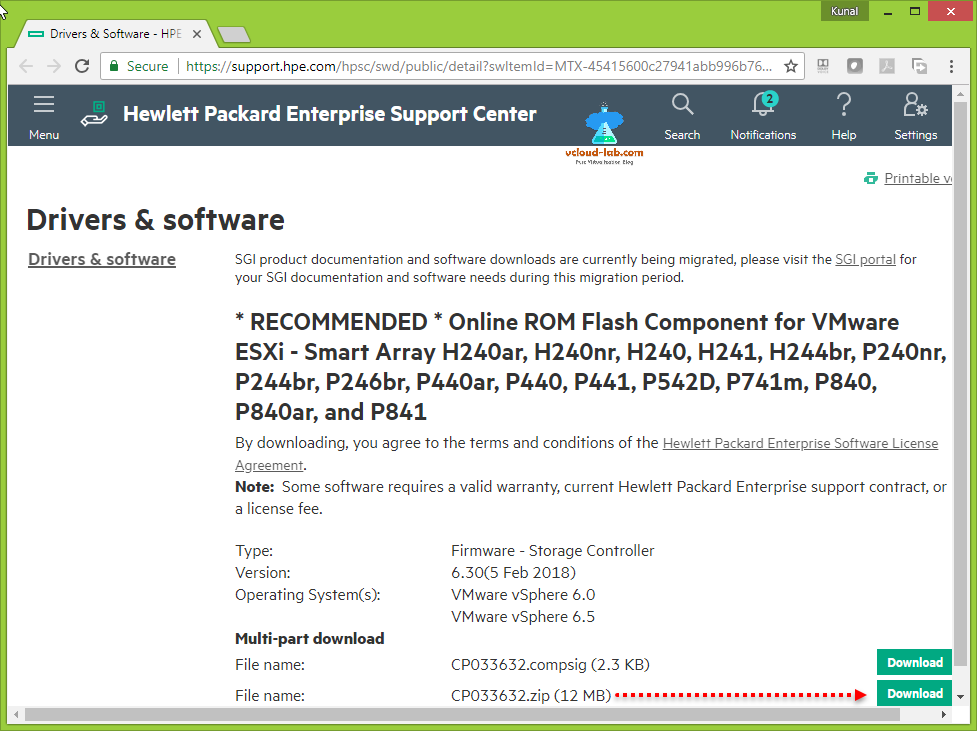

- #Esxi raid firmware install#
- #Esxi raid firmware serial#
- #Esxi raid firmware software#
For best performance, also provide a separate persistent local device with a minimum of 32 GB to store the /scratch and VMware Tools partitions of the ESX-OSData volume.
SD and USB devices are supported for boot bank partitions. Legacy SD and USB devices are supported with the following limitations: Note: GB units specified are in storage device sizes, i.e. To provide resiliency in case of device failure, a RAID 1 mirrored device is recommended. A device that delivers at least 100 MB/s of sequential write speed. A device that supports the minimum of 128 terabytes written (TBW). The disk contains the boot partition, ESX-OSData volume and a VMFS datastore. A local disk of 138 GB or larger for optimal support of ESX-OSData. Other options for best performance of an ESXi 7.0 installation are the following: The ESX-OSData volume takes on the role of the legacy /scratch partition, locker partition for VMware Tools, and core dump destination. When booting from a local disk, SAN or iSCSI LUN, at least a 32 GB disk is required to allow for the creation of system storage volumes, which include a boot partition, boot banks, and a VMFS-L based ESX-OSData volume. Upgrading to ESXi 7.0 requires a boot device that is a minimum of 4 GB. Storage Requirements for ESXi 7.0 Installation or Upgradeįor best performance of an ESXi 7.0 installation, use a persistent storage device that is a minimum of 32 GB for boot devices. VSphere Auto Deploy supports network booting and provisioning of ESXi hosts with UEFI.ĮSXi can boot from a disk larger than 2 TB if the system firmware and the firmware on any add-in card that you are using support it. With UEFI, you can boot systems from hard drives, CD-ROM drives, or USB media. VSphere 7.0 supports booting ESXi hosts from the Unified Extensible Firmware Interface (UEFI). #Esxi raid firmware software#
For Software Fibre Channel over Ethernet (FCoE), see Installing and Booting ESXi with Software FCoE. To use the SATA CD-ROM device, you must use IDE emulation mode.įor a list of supported storage systems, see the VMware Compatibility Guide at. Note: You cannot connect a SATA CD-ROM device to a virtual machine on anĮSXi host. These disks are not used as a scratch partition by default because they are seen as remote. SATA disks are considered remote, not local.
#Esxi raid firmware serial#
For Serial ATA (SATA), a disk connected through supported SAS controllers or supported on-board SATA controllers. SCSI disk or a local, non-network, RAID LUN with unpartitioned space for the virtual machines. A boot device must not be shared between ESXi hosts. Use USB, SD and non-USB flash media devices only for ESXi boot bank partitions. ESXi 7.0 requires a boot disk of at least 32 GB of persistent storage such as HDD, SSD, or NVMe. For a list of supported network adapter models, see the VMware Compatibility Guide at. 
One or more Gigabit or faster Ethernet controllers.To support 64-bit virtual machines, support for hardware virtualization (Intel VT-x or AMD RVI) must be enabled on 圆4 CPUs.Provide at least 8 GB of RAM to run virtual machines in typical production environments. ESXi 7.0 requires a minimum of 4 GB of physical RAM.ESXi 7.0 requires the NX/XD bit to be enabled for the CPU in the BIOS.For a complete list of supported processors, see the VMware compatibility guide at. ESXi 7.0 supports a broad range of multi-core of 64-bit x86 processors.ESXi 7.0 requires a host with at least two CPU cores.For a list of supported platforms, see the VMware Compatibility Guide at.
#Esxi raid firmware install#
To install or upgrade ESXi, your hardware and system resources must meet the following requirements: Make sure that the host meets the minimum hardware configurations supported by ESXi 7.0.






 0 kommentar(er)
0 kommentar(er)
